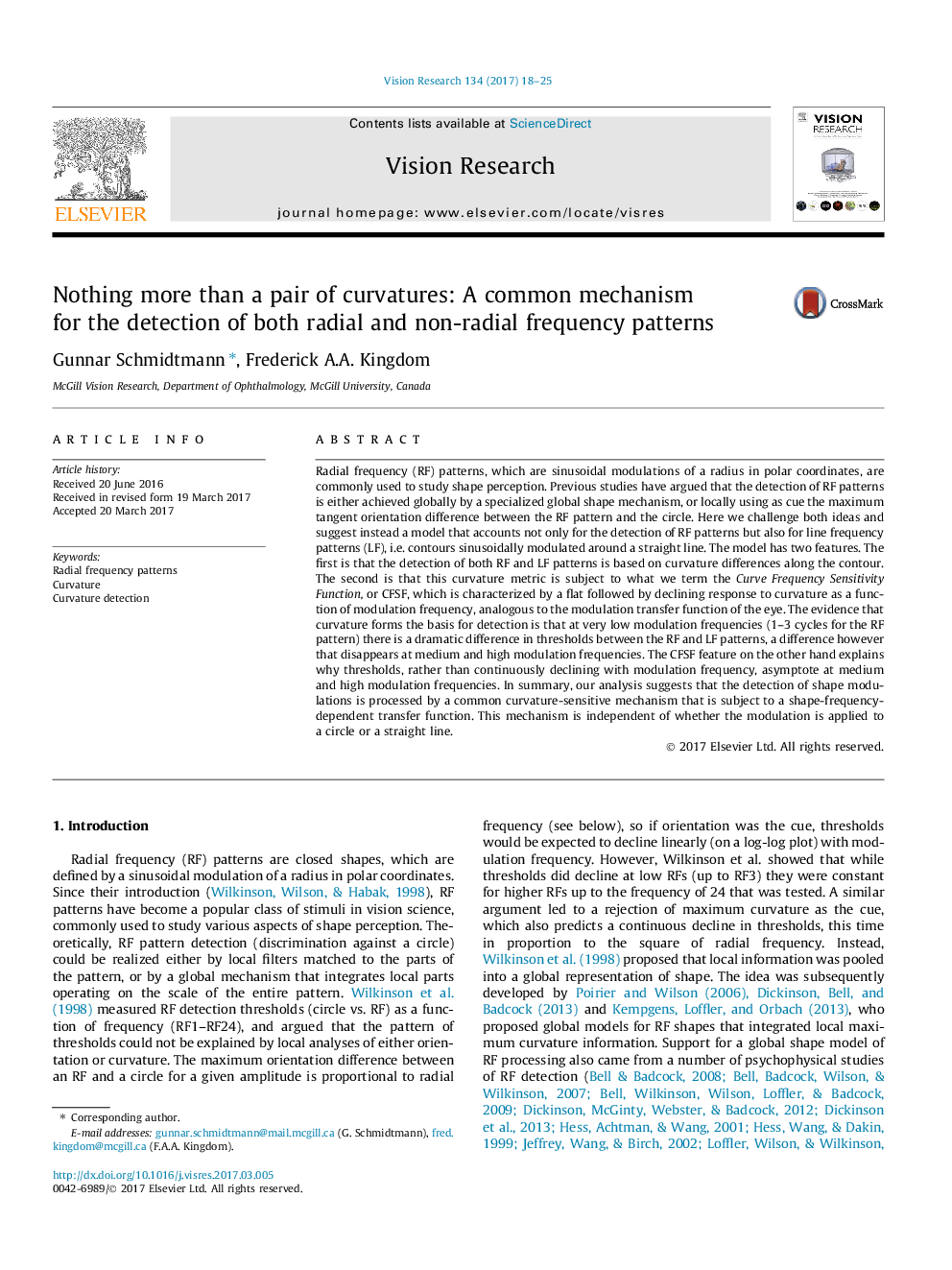| Article ID | Journal | Published Year | Pages | File Type |
|---|---|---|---|---|
| 5705877 | Vision Research | 2017 | 8 Pages |
Abstract
Radial frequency (RF) patterns, which are sinusoidal modulations of a radius in polar coordinates, are commonly used to study shape perception. Previous studies have argued that the detection of RF patterns is either achieved globally by a specialized global shape mechanism, or locally using as cue the maximum tangent orientation difference between the RF pattern and the circle. Here we challenge both ideas and suggest instead a model that accounts not only for the detection of RF patterns but also for line frequency patterns (LF), i.e. contours sinusoidally modulated around a straight line. The model has two features. The first is that the detection of both RF and LF patterns is based on curvature differences along the contour. The second is that this curvature metric is subject to what we term the Curve Frequency Sensitivity Function, or CFSF, which is characterized by a flat followed by declining response to curvature as a function of modulation frequency, analogous to the modulation transfer function of the eye. The evidence that curvature forms the basis for detection is that at very low modulation frequencies (1-3 cycles for the RF pattern) there is a dramatic difference in thresholds between the RF and LF patterns, a difference however that disappears at medium and high modulation frequencies. The CFSF feature on the other hand explains why thresholds, rather than continuously declining with modulation frequency, asymptote at medium and high modulation frequencies. In summary, our analysis suggests that the detection of shape modulations is processed by a common curvature-sensitive mechanism that is subject to a shape-frequency-dependent transfer function. This mechanism is independent of whether the modulation is applied to a circle or a straight line.
Related Topics
Life Sciences
Neuroscience
Sensory Systems
Authors
Gunnar Schmidtmann, Frederick A.A. Kingdom,
